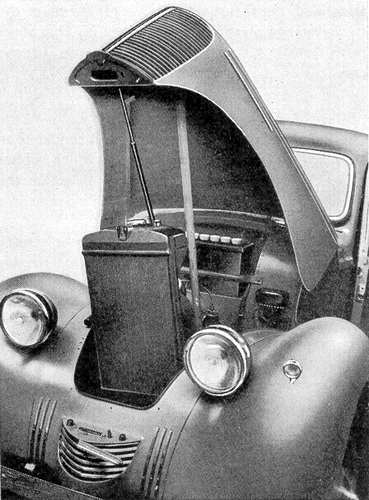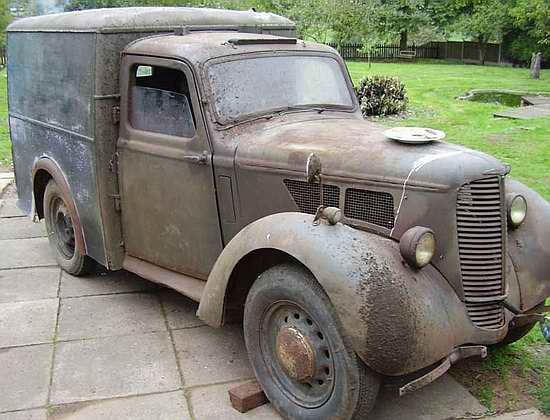OF SOUTH AUSTRALIA INC
OF SOUTH AUSTRALIA INC
OF SOUTH AUSTRALIA INC |
OF SOUTH AUSTRALIA INC |
|
For the 1940 HILLMAN MINX a totally new construction technique is employed necessitating a
corresponding revision of maintenance and servicing operations.
This new construction embodies a stressed platform "foundation" frame
which comprises the entire flooring cross members and side members to
which the body shell is welded thus forming one rigid structure. This
form of construction possesses many inherent advantages among which
the following may be briefly enumerated :–
Since this manual is concerned only with service work, however, it may be stated here that routine maintenance and repairs are considerably facilitated. As regards repairs to accidental damage, perhaps the most convincing statement which can be made is that all Insurance Companies are in favour of the change that has been made. |
||

In "Melodies" vol. 9, no. 4,
Jan Eyerman (New Jersey, USA) explains the body construction improvements:
|
The first Minxes had a separate body and chassis. This meant that the basis of the car
was two parallel steel “rails” cross braced with additional pieces of steel. The engine,
transmission, front suspension and rear suspension were all connected directly to the chassis.
The body, along with the fenders, seats, etc. was bolted onto these two steel rails.
This method of construction was simple and allowed the use of wood framing in the body.
However, the result was quite heavy. A 1939 Minx Magnificent sedan weighed about 2,130 lb.
With “unit body” construction, the body was made of steel and welded together. The body itself became the chassis and the engine, transmission, front suspension and rear suspension were bolted onto it. This resulted in a much stronger body and a “Phase II” sedan weighed 1,905 lb., or over 200 lb. less than a 1939 Minx Magnificent. |
||
Bill Watson (Vancouver, Canada) responds to a question about whether the new model was actually
released as a 1940 model, or perhaps it might have suffered a last-minute delay by 6 years due to
the war:
|
The 1958 edition of "Glass's Car Check Book" which covers British cars from
1938 through 1958, lists a new 1940 Minx introduced in September, 1939.
Its new features consisted of a unitary body and chassis construction,
handbrake between the seats, alligator bonnet, and 3 vertical chrome bars in wing aprons.
Serial numbers started at 1200500. A new Minx saloon appeared in August, 1945, listed in Glass's as "Mk. I". This model's added features were an anti-sway bar, cone guides for starting handle, cast iron brake drums and jack brackets incorporated in bumper over-riders. Early Mark I models had a vertical air cleaner while later ones were horizontal. A coupe was added in May 1946. Serial number started at 1710001 for the saloon. I do not believe auto production came to an immediate halt when war was declared on Germany in September, 1939. It took awhile before Britain converted to war production so some 1940 Minx saloons were produced. From Graham Robson's "Cars of the Rootes Group", page 45, "Although the Phase I was only announced in September 1939, just as the Second World War was beginning in Europe, a considerable number were delivered to meet civilian orders. No fewer than 10,015 examples were produced before November, 1942, when Rootes production was finally confined to military machinery; true civilian deliveries then began again in the summer of 1945." Ford, Hillman, Humber, Jaguar, Jowett, Lanchester, M.G., Morgan, Morris, Rover, Singer, Standard, Sunbeam-Talbot, and Vauxhall all had 1940 models. Jowett introduced their 1940 models, 10H and 10J, in March, 1940, according to Glass's, while Ford switched to one water inlet to cylinder block in April, 1940. Just as in North America, after the war ended British manufacturers dusted off their prewar designs (1942 in N.A. and 1940 in Britain), threw in a few improvements, and voila – 1946! The surprising thing is British manufacturers introduced their postwar models in August-September, 1945 while American manufacturers were not able to do so until the fall. |
||

HOME page